General Information
Title I, Part A is a key component of the Elementary and Secondary Education Act (ESEA), previously known as No Child Left Behind (NCLB). Its intent is to help ensure that all children have the opportunity to obtain a high quality education and reach proficiency on challenging State academic content and performance standards.
Focus areas of Title I include student achievement, parental involvement, high quality teaching, professional development, and supplemental services.
Title I began with the passage of the Elementary and Secondary Education Act (ESEA) of 1965, which provided federal funding for high-poverty schools to help students who are behind academically and at risk of falling behind. Services can include tutoring, purchase of instructional equipment, materials and supplies, parental involvement activities, professional development, pre-kindergarten programs, hiring supplemental teachers and paraprofessionals.
Title I Schools
Title I Schools in Duval County implement school-wide programs. School-wide programs have flexibility in using their Title I funds, in conjunction with other funds in the school, to upgrade the operation of the entire school. School-wide programs must conduct a comprehensive needs assessment, identify and commit to specific goals and strategies that address those needs, create a comprehensive plan, and conduct an annual review of the effectiveness of the school-wide program that is revised as needed.
The Components of a Title I School
All Title I schools must complete a comprehensive needs assessment that drives all aspects of school operations.
School reform strategies must be implemented to address the identified needs.
All instructional staff, including paraprofessionals must be highly qualified according to the criteria set by NCLB.
There must be high-quality and ongoing professional development for staff to address the needs of the school.
There must be strategies in place to recruit highly qualified teachers and place them in areas of greatest need.
Parent involvement is a critical and integral part of day-to-day operations in a Title I school.
Strategies are in place to aid in the transitions between academic grade levels, as well as school levels, i.e., pre-school to kindergarten, elementary to middle school, and middle school to high school.
Teachers are actively involved in the use of assessments and instructional decisions are driven by data analysis.
Title I schools develop specific instructional activities for students identified with the greatest needs.
Title I schools coordinate and integrate resources and services from federal, state, and local sources.
